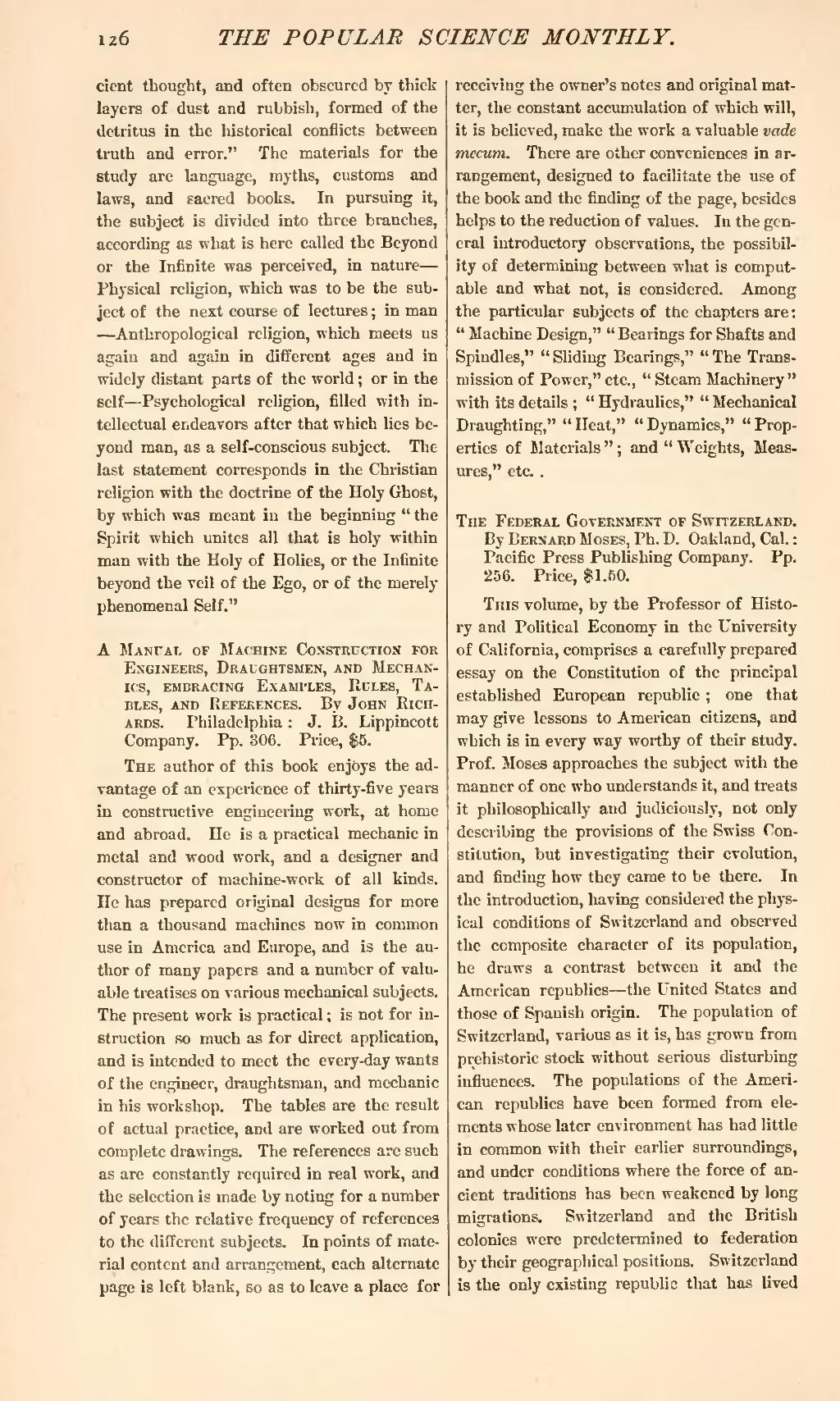cient thought, and often obscured by thick layers of dust and rubbish, formed of the detritus in the historical conflicts between truth and error." The materials for the study are language, myths, customs and laws, and sacred books. In pursuing it, the subject is divided into three branches, according as what is here called the Beyond or the Infinite was perceived, in nature—Physical religion, which was to be the subject of the next course of lectures; in man—Anthropological religion, which meets us again and again in different ages and in widely distant parts of the world; or in the self—Psychological religion, filled with intellectual endeavors after that which lies beyond man, as a self-conscious subject. The last statement corresponds in the Christian religion with the doctrine of the Holy Ghost, by which was meant in the beginning "the Spirit which unites all that is holy within man with the Holy of Holies, or the Infinite beyond the veil of the Ego, or of the merely phenomenal Self."
A Manual of Machine Construction for Engineers, Draughtsmen, and Mechanics, embracing examples, rules, tables, and References. By John Richards. Philadelphia: J. B. Lippincott Company. Pp. 306. Price, $5.
The author of this book enjoys the advantage of an experience of thirty-five years in constructive engineering work, at home and abroad. He is a practical mechanic in metal and wood work, and a designer and constructor of machine-work of all kinds. He has prepared original designs for more than a thousand machines now in common use in America and Europe, and is the author of many papers and a number of valuable treatises on various mechanical subjects. The present work is practical; is not for instruction so much as for direct application, and is intended to meet the every-day wants of the engineer, draughtsman, and mechanic in his workshop. The tables are the result of actual practice, and are worked out from complete drawings. The references are such as are constantly required in real work, and the selection is made by noting for a number of years the relative frequency of references to the different subjects. In points of material content and arrangement, each alternate page is left blank, so as to leave a place for receiving the owner's notes and original matter, the constant accumulation of which will, it is believed, make the work a valuable vade mecum. There are other conveniences in arrangement, designed to facilitate the use of the book and the finding of the page, besides helps to the reduction of values. In the general introductory observations, the possibility of determining between what is computable and what not, is considered. Among the particular subjects of the chapters are: "Machine Design," "Bearings for Shafts and Spindles," "Sliding Bearings," "The Transmission of Power," etc., "Steam Machinery" with its details; "Hydraulics," "Mechanical Draughting," "Heat," "Dynamics," "Properties of Materials"; and "Weights, Measures, "etc.
The Federal Government of Switzerland. By Bernard Moses, Ph. D. Oakland, Cal.: Pacific Press Publishing Company. Pp. 256. Price, $1.50.
This volume, by the Professor of History and Political Economy in the University of California, comprises a carefully prepared essay on the Constitution of the principal established European republic; one that may give lessons to American citizens, and which is in every way worthy of their study. Prof. Moses approaches the subject with the manner of one who understands it, and treats it philosophically and judiciously, not only describing the provisions of the Swiss Constitution, but investigating their evolution, and finding how they came to be there. In the introduction, having considered the physical conditions of Switzerland and observed the composite character of its population, he draws a contrast between it and the American republics—the United States and those of Spanish origin. The population of Switzerland, various as it is, has grown from prehistoric stock without serious disturbing influences. The populations of the American republics have been formed from elements whose later environment has had little in common with their earlier surroundings, and under conditions where the force of ancient traditions has been weakened by long migrations. Switzerland and the British colonies were predetermined to federation by their geographical positions. Switzerland is the only existing republic that has lived
